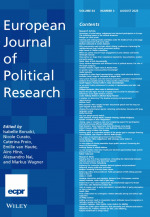
Abstract:
District magnitude, or the number of seats per district, is a critical component of electoral systems. It affects key outcomes such as accountability, legislative fragmentation, and disproportionality in representation by providing different incentives for voters, candidates and representatives. Some democracies have identical-magnitude districts (e.g., single-member districts in the UK, or twenty-member districts in Macedonia) yet many elect their representatives through districts of varying magnitudes. Thus, in cross-country analyses, researchers first come up with a summary of district magnitudes per country in a single score. Although its wide range of effects is well established, the conceptualization and measurement of district magnitude and hence the production of such a score are overlooked by the comparative literature. We show that the national score of district magnitude which then serves as a key explanatory factor in a vast array of comparative cross-country studies is a thorny business, consequential for inference on the effect of district magnitude. Specifically, different conceptualizations and measurements of district magnitude lead to different scores, and those, in turn, may both mischaracterize countries and lead to different inferences. Moreover, the status quo in measurement of district magnitude—equally weighing all districts—is often misleading, and the problem is compounded by within-country variation in magnitude and malapportionment, common in Europe and Latin America, respectively. We propose two alternative measures of district magnitude—weighing districts by the share of representatives or voters in them—and provide guidance on the circumstances under which each measure should be utilized. Our analysis has implications for how this key component of electoral systems should be conceptualized, measured and employed in cross-country analyses.
